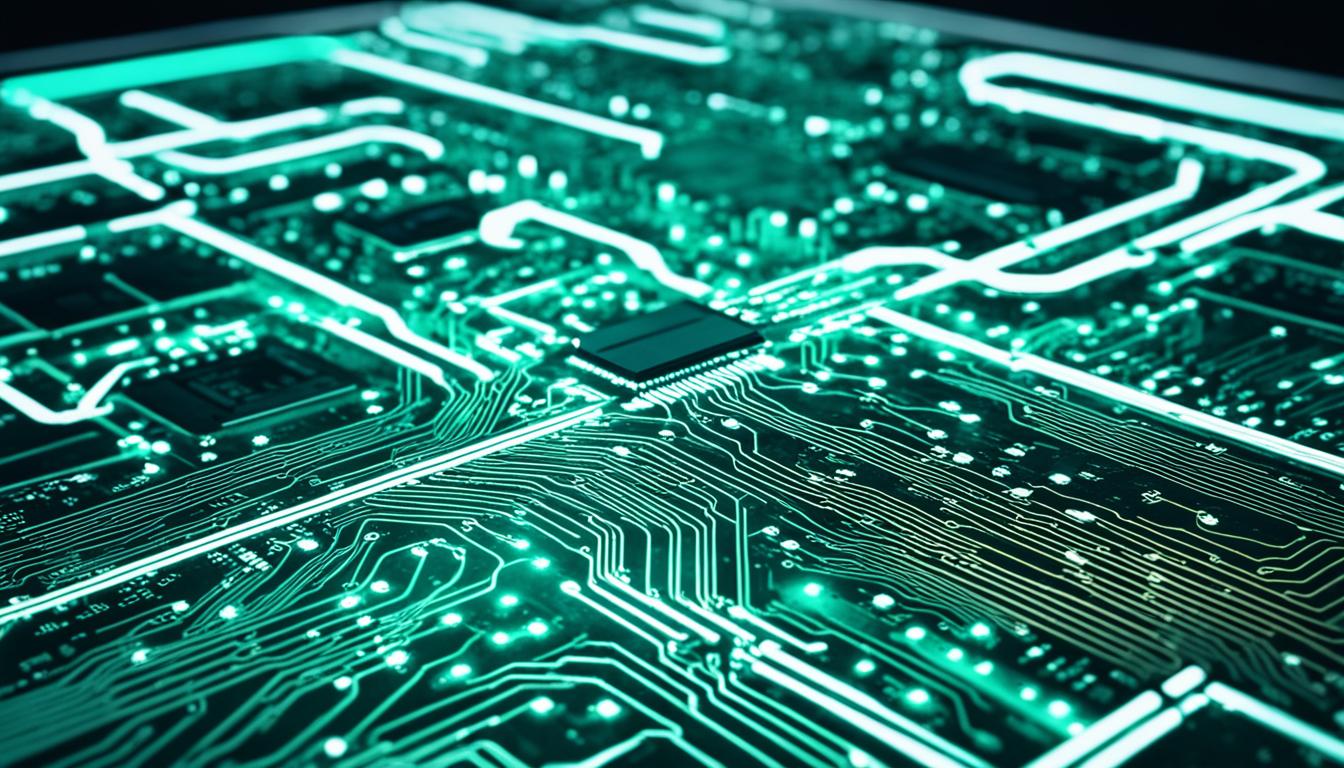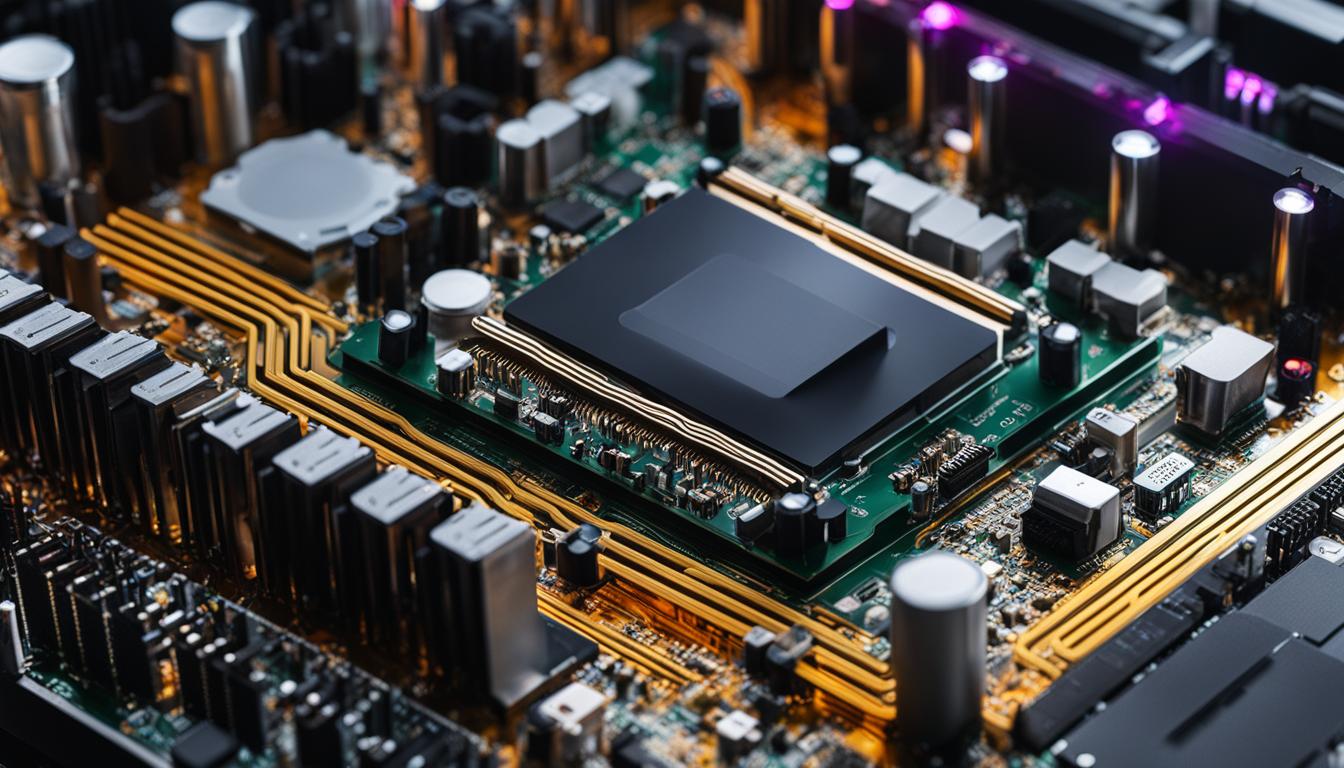Welcome to our expert guide on PCIe interview questions for VLSI interviews. In the competitive tech industry in India, having a strong understanding of the PCIe protocol is crucial for success. As experts in the field, we have compiled a comprehensive list of interview questions and answers to help you prepare for your VLSI interviews.
By familiarizing yourself with these PCIe interview questions, you will gain the knowledge and confidence to impress interviewers with your expertise in VLSI and PCIe protocol. Whether you are a fresh graduate or an experienced professional, our guide will equip you with the necessary insights to stand out in your job interviews.
From basic concepts to advanced topics, our guide covers a wide range of PCIe interview questions. You will learn about the features, architecture, power management, and testing methodologies associated with PCIe protocol. Additionally, we delve into VLSI-specific interview questions to help you navigate the challenges of integrating PCIe into VLSI designs.
With our guide, you will also explore advanced concepts and applications of the PCIe protocol. We discuss PCIe Gen4 and Gen5, lane bifurcation, Virtualization Enhanced Single-Root I/O Virtualization (SR-IOV), and Non-Transparent Bridges (NTBs). These topics will showcase your ability to work on complex PCIe designs and demonstrate your potential to contribute to cutting-edge developments in the industry.
Maximize your chances of success in VLSI interviews by leveraging our expert guide on PCIe interview questions. Equip yourself with the knowledge and confidence to excel in your job search and secure rewarding opportunities in the thriving tech industry in India.
Table of Contents
Top 25 Interview Questions and Answers on PCIe Protocol
Aspiring VLSI professionals preparing for job interviews understand the significance of having a solid grasp of the PCIe (Peripheral Component Interconnect Express) protocol. To help you excel in your interviews, we have curated a list of the top 25 interview questions and their comprehensive answers related to the PCIe protocol. By familiarizing yourself with these questions, you can confidently demonstrate your knowledge and expertise in this crucial aspect of VLSI design.
-
Question 1: What is PCIe?
Answer: PCIe is a high-speed serial bus communication protocol used for connecting various devices, such as graphics cards, network adapters, and storage devices, to a computer’s motherboard. It provides a faster and more reliable data transfer compared to traditional PCI and AGP interfaces.
-
Question 2: How does PCIe differ from PCI and AGP?
Answer: PCIe differs from PCI (Peripheral Component Interconnect) and AGP (Accelerated Graphics Port) in terms of speed, architecture, and compatibility. While PCI and AGP use parallel communication, PCIe utilizes serial communication, resulting in higher data transfer rates. PCIe also offers improved scalability and backward compatibility with older versions.
-
Question 3: What are the main features of PCIe?
Answer: The main features of PCIe include high bandwidth, low latency, scalability, hot-plug support, and power management capabilities. It also supports multiple lanes, allowing for increased data transfer rates by utilizing multiple parallel paths.
To help you visualize the differences between PCIe, PCI, and AGP, refer to the table below:
| Feature | PCIe | PCI | AGP |
|---|---|---|---|
| Speed | High | Low | Medium |
| Architecture | Serial | Parallel | Parallel |
| Compatibility | Backward compatible | No backward compatibility | No backward compatibility |
By thoroughly understanding and confidently addressing these interview questions on the PCIe protocol, you can impress your potential employers and increase your chances of landing a rewarding VLSI role. Stay tuned for more insightful sections in our expert guide to master the intricacies of VLSI interviews and excel in the ever-evolving tech industry.
VLSI Interview Questions on PCIe Protocol
In VLSI interviews, having a solid understanding of the PCIe protocol can give you a competitive edge. This section focuses specifically on VLSI interview questions related to PCIe implementation. By diving into the intricacies of integrating PCIe into VLSI design, we aim to prepare you for the challenges and considerations that may arise during job interviews.
Thoroughly familiarizing yourself with these VLSI interview questions will enable you to confidently showcase your expertise in both VLSI and PCIe protocol. By demonstrating your proficiency in PCIe implementation, you can position yourself as a valuable candidate in the tech industry in India.
Challenges in Integrating PCIe into VLSI Systems
Integrating the PCIe protocol into VLSI systems presents unique challenges. These challenges include:
- High-speed signaling: PCIe operates at high speeds, requiring careful consideration of signal integrity, transmission line impedance, and termination techniques.
- Power and thermal management: PCIe devices need efficient power delivery and thermal management techniques to ensure reliable and stable operation.
- Physical layer implementation: Implementing the PCIe physical layer requires expertise in areas such as lane configuration, equalization, and high-speed serial interfaces.
- Protocol compliance and interoperability: Ensuring that PCIe devices comply with the protocol standards and can seamlessly communicate with other devices is critical for a successful VLSI implementation.
By addressing these challenges and showcasing your knowledge and experience in VLSI implementations involving PCIe, you can impress interviewers and increase your chances of securing the job.
Sample VLSI Interview Questions on PCIe Protocol
Here are some VLSI interview questions focused specifically on the PCIe protocol:
| Question | Answer |
|---|---|
| 1. Explain the main components of the PCIe protocol. | The PCIe protocol consists of a transaction layer, data link layer, and physical layer. The transaction layer handles the transfer of application-specific data, while the data link layer provides error detection and flow control mechanisms. The physical layer is responsible for the electrical and mechanical aspects of data transmission. |
| 2. What is the purpose of lane training in PCIe? | Lane training is a process that establishes optimal signal transmission parameters between two PCIe devices. It helps compensate for transmission line losses, equalize signal levels, and adjust timing to ensure reliable communication. |
| 3. How does the PCIe power management feature work? | PCIe power management allows devices to enter low-power states, conserving energy when idle. It involves a combination of software control and hardware signals to manage power states and transition between them seamlessly. |
| 4. Can you explain the difference between a PCIe switch and a PCIe bridge? | A PCIe switch connects multiple PCIe devices, allowing them to communicate with each other. On the other hand, a PCIe bridge connects a PCIe bus to a different bus interface, enabling communication between different types of devices. |
By thoroughly preparing for these VLSI interview questions on PCIe protocol, you can demonstrate your expertise and stand out as a qualified candidate in the VLSI industry.

Advanced Concepts and Applications of PCIe Protocol
In this section, we will explore the advanced concepts and applications of the PCIe protocol that go beyond basic interview questions. By delving into these advanced topics, you can gain a deeper understanding of PCIe and showcase your expertise in the field.
1. PCIe Gen4 and Gen5
PCIe Gen4 and Gen5 are the latest versions of the PCIe protocol, offering significant advancements in data transfer speed and bandwidth. These newer generations have revolutionized the performance capabilities of PCIe and are widely used in high-speed data applications, such as solid-state drives (SSDs), graphics cards, and network interfaces.
2. Lane Bifurcation
Lane bifurcation refers to the ability of the PCIe protocol to split a single physical lane into multiple logical lanes. This feature enables efficient utilization of PCIe resources and allows for the simultaneous communication of multiple devices through a single physical connection. Understanding lane bifurcation is crucial in designing systems that require multiple PCIe devices to operate concurrently.

3. Virtualization Enhanced Single-Root I/O Virtualization (SR-IOV)
SR-IOV is a technology that enables the virtualization of PCIe devices, allowing for the efficient sharing of PCIe resources among multiple virtual machines (VMs). With SR-IOV, each VM can have direct access to a dedicated portion of a PCIe device’s resources, improving performance and reducing latency. This technology is particularly relevant in cloud computing and data centers where efficient resource utilization is essential.
4. Non-Transparent Bridges (NTBs)
NTBs are special PCI Express bridges that enable direct communication between two separate PCIe domains without introducing latency or interrupting the normal operation of the devices within each domain. NTBs are commonly used in applications that require high-speed data transfer between different PCIe domains, such as GPU-to-GPU communication in multi-GPU systems.
By familiarizing yourself with these advanced concepts and applications of the PCIe protocol, you can demonstrate your ability to work on complex PCIe designs and contribute to cutting-edge developments in the industry.
Conclusion
In conclusion, mastering the PCIe protocol is crucial for success in VLSI interviews in the tech industry in India. Our expert guide, packed with top interview questions and comprehensive answers, equips candidates with the knowledge they need to excel in these interviews. By leveraging this guide and dedicating time to understanding the intricacies of PCIe, candidates can significantly enhance their chances of securing rewarding tech industry opportunities.
Preparing for VLSI interviews requires a strong understanding of the PCIe protocol, as it is a fundamental aspect of VLSI design. The interview questions covered in this article delve into various aspects of PCIe, such as its features, architecture, power management, and advanced applications. By familiarizing themselves with these questions and practicing their answers, candidates can showcase their expertise and stand out from the competition during job interviews.
With the tech industry in India constantly evolving, it is essential for candidates to stay up-to-date with the latest advancements in PCIe. This article also delves into advanced concepts and applications of the PCIe protocol, including PCIe Gen4 and Gen5, lane bifurcation, SR-IOV, and NTBs. By demonstrating proficiency in these advanced topics, candidates can position themselves as valuable assets to companies at the forefront of technological innovation.
In summary, our expert guide on PCIe interview questions equips candidates with the knowledge and confidence needed to excel in VLSI interviews. By thoroughly understanding the key concepts of PCIe and practicing their responses to the provided questions, candidates can increase their chances of securing lucrative opportunities in the tech industry in India. Prepare effectively, master the PCIe protocol, and embark on a successful career in VLSI.

